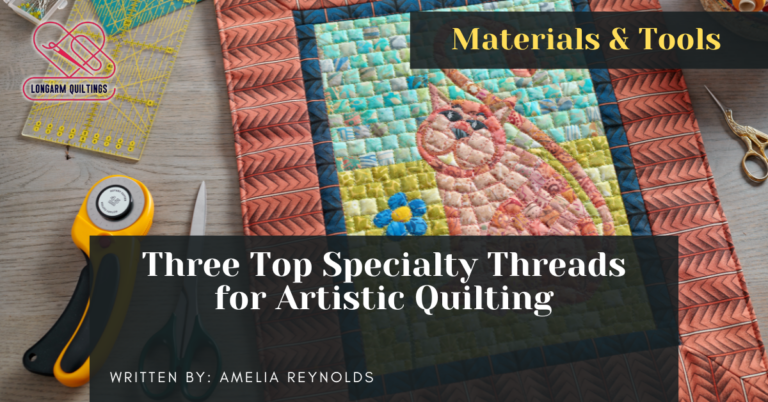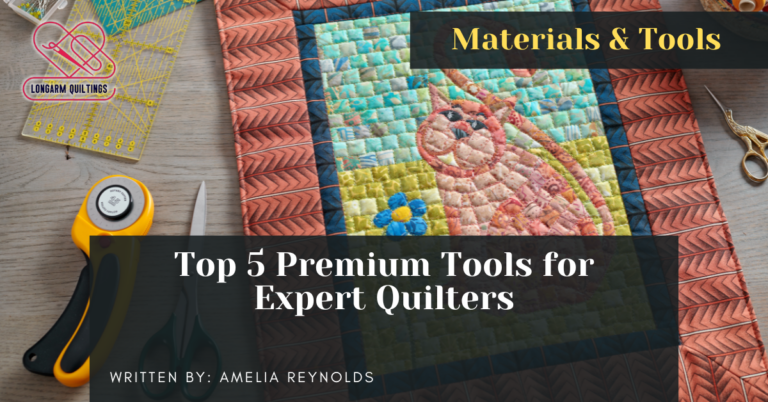In the realm of quilting, the quest for sustainable and eco-friendly materials has gained momentum in recent years. Crafters are increasingly seeking alternatives that are kinder to the environment without compromising the quality of their creations.
From utilizing fabrics made from recycled materials to exploring natural dyes for vibrant colors, the options for green quilting materials are diverse and innovative.
In this exploration of environmentally conscious choices, one can't help but wonder about the impact these alternatives have on the final masterpiece.
Sustainable Fabric Options
When seeking sustainable fabric options for quilting projects, one can explore a variety of eco-friendly materials that prioritize environmental consciousness and resourcefulness.
Upcycled textiles offer a unique and sustainable option for quilters. These textiles are created from repurposed materials, such as old clothing or fabric scraps, which are transformed into new and usable textiles, reducing waste and the need for new materials. By incorporating upcycled textiles into quilting projects, crafters can contribute to a more circular economy and lessen the environmental impact of their creations.
Ethical sourcing is another crucial aspect to consider when selecting sustainable fabric options for quilting. Ethically sourced fabrics ensure that the materials are produced in a manner that respects both the environment and the workers involved in the production process. By choosing fabrics that are ethically sourced, quilters can support fair labor practices and contribute to a more sustainable and socially responsible quilting industry.
Incorporating upcycled textiles and prioritizing ethical sourcing are innovative ways to create beautiful quilting projects while minimizing environmental harm and promoting sustainability.
Natural Dyes for Coloring
Exploring the vibrant world of natural dyes offers eco-conscious quilters a sustainable and creative avenue for coloring their quilting projects. By utilizing plant-based pigments, quilters can achieve an earthy color palette while reducing their environmental impact. Here are some key points to consider when using natural dyes:
- Plant-Based Pigments: Extracting colors from plants such as indigo, madder root, and onion skins provides a renewable and biodegradable alternative to synthetic dyes.
- Eco-Friendly Process: Natural dyeing typically involves less water consumption and chemical usage compared to conventional dyeing methods, promoting a greener approach to quilting.
- Unique Variations: Natural dyes often result in unique variations and subtle tonal differences, adding a bespoke and artisanal touch to quilting projects.
- Sustainability: By opting for natural dyes, quilters contribute to sustainable practices in the textile industry, supporting eco-friendly initiatives and reducing their carbon footprint.
Embrace the beauty of nature's hues with plant-based dyes, creating stunning quilts that reflect both creativity and environmental consciousness.
Eco-Friendly Batting Choices
Utilizing sustainable materials for quilt batting can significantly reduce the environmental impact of quilting projects while promoting eco-conscious practices in the textile industry. When it comes to eco-friendly batting choices, bamboo and hemp are excellent options.
Bamboo batting is a popular choice among quilters looking for a sustainable option. Bamboo is a fast-growing plant that requires minimal water and no pesticides to thrive. This makes bamboo batting an environmentally friendly choice that is soft, breathable, and naturally antibacterial. Quilts made with bamboo batting have a luxurious drape and are suitable for both hand and machine quilting.
Hemp batting is another eco-friendly option that is gaining popularity in the quilting community. Hemp is a durable and resilient fiber that is naturally resistant to mold and mildew. Quilts made with hemp batting have a textured look and provide excellent warmth. Additionally, hemp is a highly sustainable crop that requires minimal water and no herbicides or pesticides to grow, making it a great choice for environmentally conscious quilters. By choosing bamboo or hemp batting, quilters can create beautiful quilts while reducing their environmental footprint.
Recycled Thread Selections
To continue exploring sustainable options for quilting materials, turning attention to recycled thread selections offers a resourceful and eco-conscious approach to reducing waste in textile production. By opting for upcycled yarn options and supporting eco-conscious thread brands, quilters can contribute to a more sustainable and environmentally friendly quilting practice.
Here are some key considerations when selecting recycled threads:
- Varied Color Options: Recycled threads come in a wide range of colors, allowing for creative freedom while remaining environmentally friendly.
- Durability and Strength: Despite being made from upcycled materials, these threads offer durability and strength, ensuring your quilts will withstand the test of time.
- Supporting Sustainable Practices: Choosing eco-conscious thread brands supports companies that prioritize sustainability and ethical production processes.
- Reducing Environmental Impact: By using recycled thread selections, quilters can actively participate in reducing the environmental impact of textile waste production.
Organic Cotton Quilting Supplies
When seeking sustainable alternatives for quilting materials, incorporating organic cotton quilting supplies presents a conscientious choice that aligns with eco-friendly principles and promotes a more environmentally responsible approach to crafting. Organic cotton is grown without the use of harmful chemicals, pesticides, or synthetic fertilizers, making it a healthier option for both the environment and those who come into contact with the fabric. Additionally, organic cotton quilting supplies are often dyed using natural, plant-based dyes, further reducing the ecological footprint of the quilting process.
In addition to organic cotton, other eco-friendly options for quilting materials include hemp quilting and bamboo fibers. Hemp quilting fabrics are durable, breathable, and naturally resistant to mold and UV rays, making them an excellent choice for sustainable quilting projects. Bamboo fibers are also a popular choice for environmentally conscious quilters, as bamboo is a fast-growing and renewable resource that requires minimal water and pesticides to thrive. By incorporating these organic and sustainable materials into quilting projects, crafters can create beautiful, eco-friendly quilts that align with their values of environmental stewardship.
Biodegradable Quilt Backing Materials
Exploring sustainable practices within quilting extends to the choice of biodegradable quilt backing materials, which offer an eco-conscious solution to reduce environmental impact in crafting projects. When selecting materials for the backing of your quilts, consider options that prioritize sustainability and biodegradability. Here are some eco-friendly choices to consider:
- Compostable fibers: Opt for quilt backing materials made from natural fibers like organic cotton, hemp, bamboo, or Tencel, which are biodegradable and break down easily in composting systems.
- Eco conscious finishes: Choose quilt backing fabrics that have been treated with eco-conscious finishes, such as plant-based dyes or low-impact dyes, to minimize environmental harm during the production process.
- Recycled materials: Look for quilt backing materials that are made from recycled fibers or fabrics, giving a new life to pre-existing materials and reducing waste.
- Biodegradable synthetics: Explore innovative options like biodegradable synthetic fibers that are designed to break down naturally over time, offering a sustainable alternative to traditional synthetic materials.
Frequently Asked Questions
Are There Any Specific Considerations for Choosing Green Quilting Materials Based on the Type of Quilting Project Being Undertaken?
When selecting eco-friendly fabrics for quilting projects, it's crucial to consider the sustainability of materials. Choose natural fibers like organic cotton, hemp, or linen. Embrace sustainable quilting techniques such as hand quilting or upcycling fabrics for a green approach.
How Can I Ensure That the Green Quilting Materials I Choose Are Durable and Long-Lasting?
Ensuring the durability of green quilting materials involves selecting quality eco-friendly options known for their longevity assurance. Sustainable benefits can be maximized through eco-conscious practices and choosing materials with proven durability, contributing to a more resilient and environmentally-friendly quilting project.
Are There Any Specific Care Instructions for Maintaining Quilts Made With Green Alternatives?
For maintaining quilts made with green alternatives, follow eco-friendly cleaning tips like spot cleaning with mild soap, and air drying in the sun. Store quilts in breathable, natural fiber bags to prevent moisture buildup. Sustainable practices ensure longevity.
Can Green Quilting Materials Be More Expensive Than Traditional Options, and Are There Ways to Save on Costs?
When considering green quilting materials, it's essential to acknowledge that eco-friendly options can sometimes be pricier due to sustainable production processes. To save on costs, one can opt for upcycled fabrics, swap with other quilters, or buy in bulk. Quality assurance in eco-friendly materials ensures longevity and environmental impact mitigation.
Are There Any Specific Brands or Suppliers That Specialize in Providing a Wide Range of Green Quilting Materials?
Sustainable sourcing and ethical production are key in selecting suppliers specializing in eco-friendly quilting materials. Brands like X and Y offer a wide range of organic options, showcasing a commitment to environmentally conscious practices within the quilting industry.
Conclusion
In conclusion, embracing green alternatives for quilting materials is a sustainable and innovative way to reduce our environmental impact.
By using sustainable fabric options, natural dyes, eco-friendly batting choices, recycled thread selections, organic cotton quilting supplies, and biodegradable quilt backing materials, we can create beautiful quilts while also caring for the planet.
Making conscious choices in our quilting materials can make a positive difference for future generations and the health of our planet.






